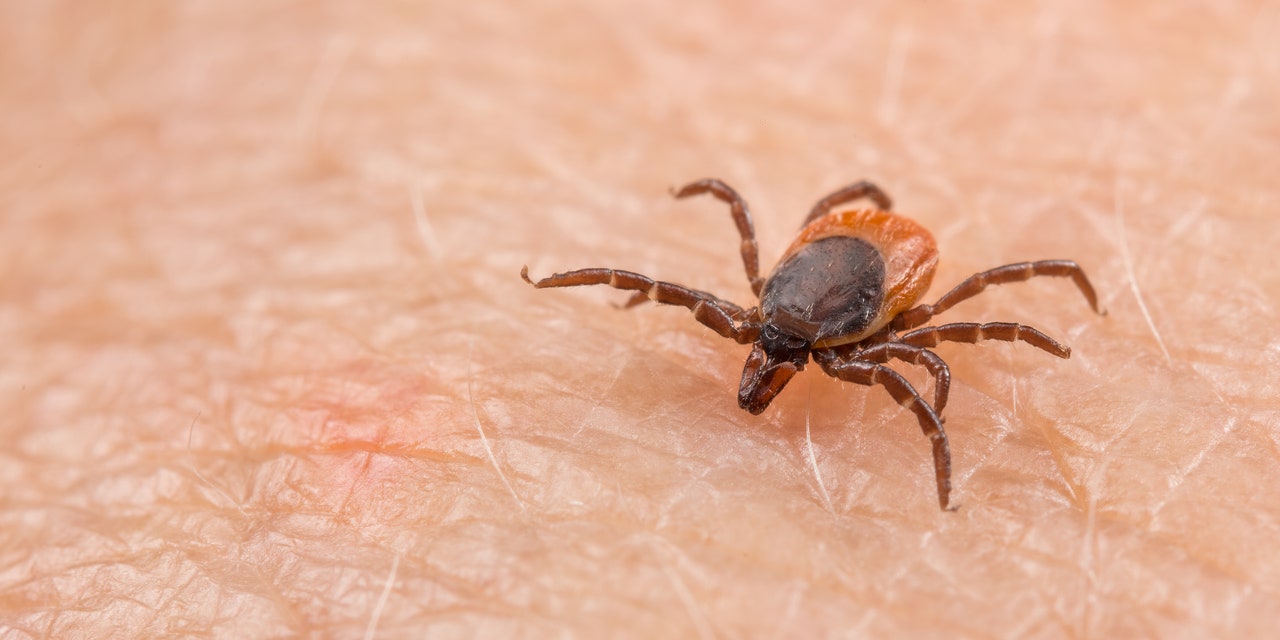Last spring, I took my dog on a walk in a state park while visiting family in Florida. It was a cool day (for Florida, anyway), and the trail was lined with tropical plants. Just as I was feeling stoked that I found a beautiful new hiking spot, I noticed a black spot on my dog. It was a tick.
Gross, but no big deal, I thought. I pulled it off and continued onward. Within a few minutes, I noticed another tick—then another, and another, and another—on him, but also on my arms, shoes, and socks. By the end of the walk, I had pulled a total of 16 ticks off of my dog and myself (16!!!!). I grew up near the woods in Pennsylvania, so I’m no stranger to the occasional tick bite, but this was absurd.
I wondered: What the heck is going on with all these ticks? As it turns out, these little bloodsuckers are having a heyday. There are more reports of tick-borne illnesses (like Lyme disease and babesiosis) than ever before in the U.S., and the warming climate is one big factor that’s making ticks more active, resilient, and unpredictable. If you have plans to camp, hike, or even just spend time outdoors this summer, here’s what to know about why ticks are thriving in grassy, wooded places more than ever, and how to take steps to protect yourself from getting sick from their bites.
Why are there so many ticks right now?
Tick-borne diseases are significantly underreported, but, even so, experts have seen a 25% increase in documented infections between 2011 and 2019, which is the most recent available data from the Centers for Disease Control and Prevention (CDC). Janet Foley, PhD, DVM, a veterinarian and disease ecologist at the UC Davis School of Veterinary Medicine, tells SELF that there are a few things going on. That uptick is happening because, one, people are more aware of ticks and the dangers they pose, and two, compared to even a decade ago, we have better surveillance systems in place to catch cases when they happen.
But that upward trend isn’t only due to an increase in detection: Climate change is also causing big shifts in ticks’ actual behavior that contributes to their spreading illnesses. Ticks are highly sensitive to their environment, so any fluctuations in temperature, humidity, and rainfall, among other factors that affect their habitats, hugely impact them, says Dr. Foley. Ticks that prefer cooler, wetter areas—like black-legged ticks (a.k.a. deer ticks) that can transmit Lyme disease, babesiosis, and Powassan virus—have been pushed north to new locations (hello, Canada). Those that do best in dry, hot conditions—such as the dog tick, which can carry Rocky Mountain Spotted Fever—are flourishing, particularly in the Southwest: According to Dr. Foley, cases of Rocky Mountain Spotted Fever have significantly risen in recent years, most likely due to the warmer weather.
The result: We don’t really know where ticks, and the diseases they spread, are headed. “Across the board, one of the most severe problems is that we start to not know where to expect disease, and that means that the local doctors and local people at risk don’t really know what to do to protect themselves,” says Dr. Foley.






